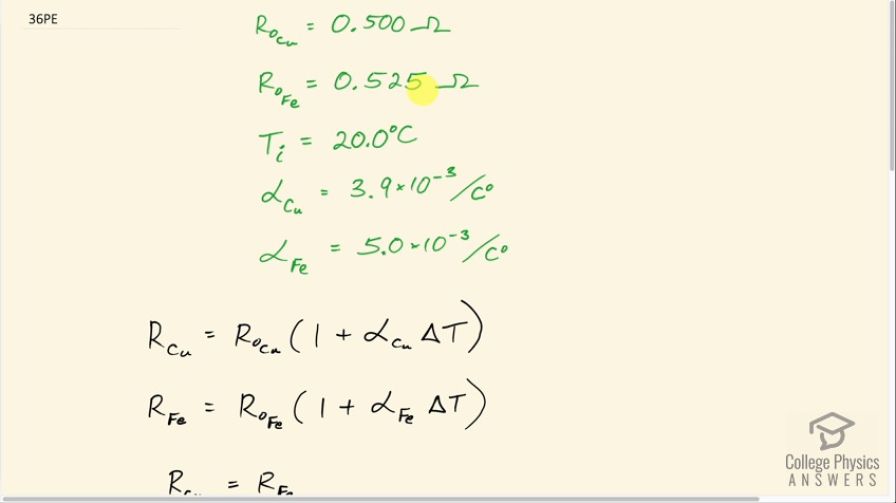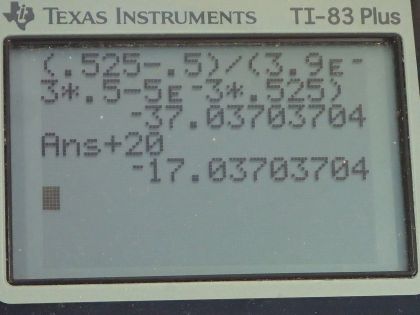Question
A copper wire has a resistance of at , and an iron wire has a resistance of at the same temperature. At what temperature are their resistances equal?
Final Answer
Solution video
OpenStax College Physics for AP® Courses, Chapter 20, Problem 36 (Problems & Exercises)

vote with a rating of
votes with an average rating of
.
Calculator Screenshots
Video Transcript
This is College Physics Answers with Shaun Dychko. We have a copper wire with a resistance of 0.500 ohms and an iron wire with a resistance of 0.525 ohms both at an initial temperature of 20.0 degrees Celsius. In table [20.2], I looked up the temperature of coefficient of resistivity for copper and for iron and broke both of those down here and the question asks at what temperature will the resistances be the same? So we write down an expression for the resistance of the copper wire: it's the original resistance at 20.0 degrees Celsius times 1 plus this temperature coefficient of resistivity multiplied by some change in temperature and then the resistance for the iron wire is its initial resistance times 1 plus α—for iron— times the change in temperature. Now this change in temperature does not need a subscript Cu for 'copper' or Fe for 'iron' because they both start at the same initial temperature and they will both end at the same final temperature so the change in temperature will be the same for both of them. Then after finding this change in temperature, we will say the final temperature is the initial temperature plus whatever change happened that comes at the end. Okay! So the resistances have to be the same and so that means this expression that is here has to equal this expression here and that's what we write down at this line and then we do some algebra to solve for ΔT. So first we distribute this R naught Cu into the brackets and then distribute the R naught for the iron into the brackets and then we have this expression here and then we are going to bring the terms containing ΔT onto the same side so this term will remain there and then this term gets subtracted from both sides or in other words, gets moved to the other side so it becomes a minus α FeR naught FeΔT and then this term gets subtracted from both sides and then we are left with this right hand side here R naught Fe minus R naught Cu. Then we factor the ΔT out from both these terms and we are left with Δ times bracket α CuR naught Cu minus α FeR naught Fe and then divide both sides by this bracket and we have then that the change in temperature is the initial resistance of the iron minus the initial resistance of the copper divided by the temperature coefficient of resistivity for copper multiplied by the copper's initial resistance minus the counterpart for iron. Okay! So that's 0.525 ohms—resistance for the iron at 20.0 degrees Celsius— minus 0.500 ohms—resistance for copper at 20.0— divided by 3.9 times 10 to the minus 3 per Celsius degree times 0.500 ohms minus 5.0 times 10 to the minus 3 per Celsius degree times 0.525 ohms which gives negative 37.037 Celsius degrees; that's the change in temperature that's necessary for the resistances to be the same. So the final temperature then will be the initial plus the change so that's 20.0 degrees Celsius plus negative 37.037 which is minus 17.0 degrees Celsius will be the temperature at which both wires will have the same resistance.
